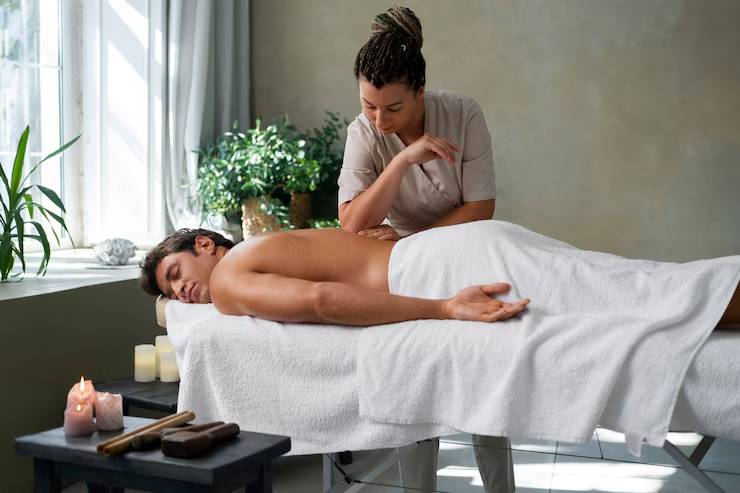After pushing your body to its limits during an intense training session, your muscles are screaming for relief. Walk in massage offers the perfect solution for athletes who need immediate attention without the hassle of scheduling appointments days in advance. The convenience of simply showing up when your body needs it most makes this option increasingly popular among serious fitness enthusiasts looking to maintain peak performance.
For those in central Ohio, walk in massage Columbus Ohio locations provide accessible therapeutic options that fit seamlessly into unpredictable training schedules. Many athletes discover that incorporating regular massage therapy into their recovery routine significantly reduces downtime between workouts and helps prevent the nagging injuries that can derail training progress. The ability to get treatment precisely when needed—not days later—can make all the difference in recovery speed.
How Massage Accelerates Muscle Recovery
The science behind post-workout massage therapy is compelling. When muscles work hard, they develop microscopic tears and accumulate metabolic waste like lactic acid. Targeted massage techniques help flush these waste products from tissues while increasing blood flow to damaged muscle fibers, delivering oxygen and nutrients exactly where they’re needed most.
Studies show that athletes receiving regular massage therapy experience reduced inflammation markers in their bloodstream compared to those who skip this recovery method. The pressure applied during therapeutic massage also helps break up adhesions and scar tissue that naturally form during the repair process, allowing muscles to maintain their elasticity and range of motion even after challenging workouts.
Best Massage Techniques for Athletes
Not all massage approaches offer equal benefits for athletic recovery. Deep tissue work targets the deeper layers of muscle tissue, releasing chronic tension patterns and addressing problems that develop over time. This technique proves especially effective for resolving persistent issues that might otherwise lead to compensatory movement patterns and eventual injury.
Sports massage, on the other hand, typically incorporates more stretching and focuses on specific muscle groups relevant to your athletic discipline. The therapist might concentrate on legs for runners or shoulders for swimmers, customizing pressure and techniques according to individual needs and the timing relative to competition schedules. Getting this specialized attention without an appointment makes walk in services particularly valuable.
Timing Your Massage for Maximum Benefit
Knowing when to get a massage can significantly impact its effectiveness for athletic recovery. Many sports medicine experts recommend waiting at least 1-2 hours after intense exercise before seeking massage therapy, allowing the initial acute inflammation response to begin the healing process naturally. This timing helps ensure the massage enhances rather than interferes with your body’s recovery mechanisms.
For regular maintenance, many athletes find that scheduling walk-in sessions 48-72 hours before major competitions helps optimize muscle function without causing soreness during the event. After competitions or particularly grueling training sessions, waiting 6-24 hours before getting massage therapy offers the best balance between allowing initial recovery processes and accelerating overall healing time.
Beyond Physical Recovery: Mental Benefits
The advantages of massage extend beyond physical recovery. The parasympathetic nervous system activation that occurs during massage therapy helps reduce stress hormones like cortisol while boosting mood-enhancing neurotransmitters such as serotonin and dopamine. This physiological response creates an ideal state for both physical healing and mental recovery from the stresses of intense training.
Many athletes report improved sleep quality following massage therapy sessions, which further enhances recovery since the majority of physical repair processes happen during deep sleep cycles. Better sleep combined with reduced anxiety creates a positive feedback loop that supports consistent training performance and helps prevent the burnout that often affects serious athletes during peak training periods.
Maximizing Your Walk In Massage Experience
To get the most from your walk in a massage session, arrive well-hydrated and communicate clearly about any specific issues you’re experiencing. Let your therapist know about recent workouts, competition schedules, and any persistent problem areas that might need extra attention. This information helps them customize pressure and techniques to your current needs rather than following a generic protocol.
Wearing loose, comfortable clothing after your session allows your body to continue relaxing. Many athletes find that gentle stretching later in the day helps maintain the increased range of motion achieved during therapy. Drinking plenty of water following massage helps flush metabolic waste released from tissues during treatment and supports ongoing cellular repair processes throughout your body.
Conclusion
Incorporating walk-in massage therapy into your athletic recovery routine offers significant advantages for both performance and injury prevention. The accessibility of treatment exactly when you need it—without appointment barriers—means you can respond to your body’s signals promptly and maintain optimal training conditions. Whether you’re a weekend warrior or competitive athlete, this approach to recovery management could be the missing piece in your training program that helps you reach new performance heights.
Featured Image Source: https://img.freepik.com/free-photo/front-view-woman-working-spa_23-2150911820.jpg

